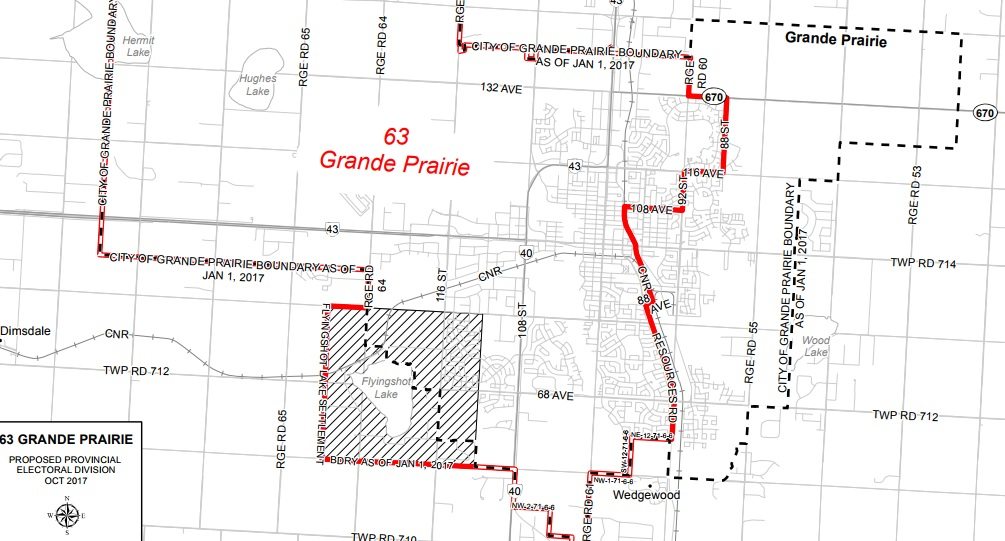The Electoral Boundaries Commission has made a big change to its recommendation for the Grande Prairie region. While it’s still proposing a fully urban riding and a mostly rural one, the divide has been moved from west of the city to the east.
The interim report released in May suggested the area northwest of Grande Prairie become part of the Central Peace – Notley riding, and the rest of the Grande Prairie – Wapiti riding be absorbed into Grande Prairie – Smoky.
“Many people didn’t like that,” says Chair Justice Myra Bielby. “They suggested that the Grande Prairie – Smoky territory was more closely aligned with Central Peace – Notley because of the highway going through it. The highway from Dunvegan to Edmonton goes down the east side of Grande Prairie and that’s where the natural trading area is.”
The area west of Grande Prairie would be part of the blended Grande Prairie – Wapiti riding with part of the city east of Resources Road, while the rest of the city and the Flyingshot Lake Settlement would make up the new urban Grande Prairie riding. Bielby says a city-only riding was necessary due to its rapid growth.
“It has been one of the fastest growing areas in the province over the last eight years… The City of Grande Prairie alone is well over 60,000 people and so we could not leave it at one riding because that way your population would be underrepresented in the legislature.”
The average constituency size in Alberta is 46,803 residents, and both GP – Wapiti and GP – Smoky have around 40,000 currently. Bielby acknowledges their proposal will mean more travel time for MLAs and for people to see them, but she believes that is helped by technology.
“Having large geographic size is still going to allow effective representative because of these other social media contacts and other electronic means of communication that just weren’t around 20 years ago.”
Central Peace – Notley (which has been shortened from Dunvegan – Central Peace – Notley for simplicity) will keep its special constituency status, along with Lesser Slave Lake, meaning it can have a population up to 50 per cent of the provincial average.
“Basically because they’re so huge and sparsely populated,” explains Bielby. “Lesser Slave Lake is one-and-a-half times the size of Belgium, and Peace River one-and-a-half times the size of the Netherlands. The three constituencies up in the northeast corner of the province are one-and-a-half times the size of the Canadian Maritime provinces, so it’s a vast area.”
Bielby notes that the way it is now, a vote in Dunvegan would have 3.5 times the effect of one in Calgary if an election was held. Bielby adds that Edmonton, Calgary, Grande Prairie and Fort McMurray are driving the province’s growth, while other areas are falling behind.
To that effect, three more MLAs are being added to Edmonton, Calgary and the Airdrie-Cochrane area, while the rural part of the province is losing three. The five member panel had one dissenting voice in commissioner Gwen Day, who argued rural Albertans won’t be effectively represented.






